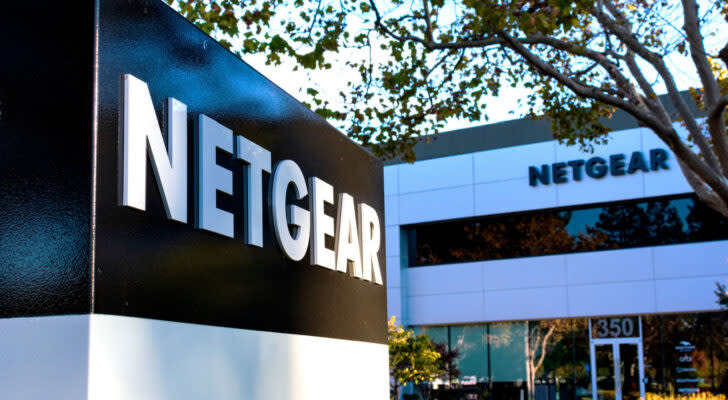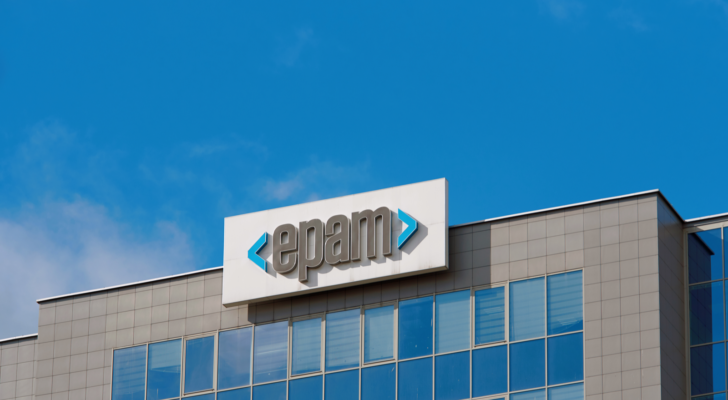4 Top Tech Stocks to Buy and 3 to Stay Far Away From
Tech stocks are tricky now because the technology market is in a state of flux. This year brought a big reset for tech stocks after record sales for many product categories in 2021 and 2022. As the economy reopened, people spent more on in-person products and experiences while growth of online spending slowed.
This had wide-ranging effect on tech stocks, and new innovations such as AI are further shaking up the playing field. And rapidly fluctuating interest rates add another point of uncertainty as well.
So what are investors to do with their tech stocks heading into 2024? Here are four tech stocks that are buys right now, and three tech stocks that investors should leave off their holiday shopping lists.
InvestorPlace - Stock Market News, Stock Advice & Trading Tips
Qualcomm (QCOM)

Source: Xixi Fu / Shutterstock.com
Qualcomm (NASDAQ:QCOM) is a semiconductor company focused on communications technologies. The company built its fortune commercializing 3G and 4G telephony technology. It is now central in 5G deployment and is already working on establishing the framework for 6G which is aiming for commercial impact around 2030.
There’s plenty more to Qualcomm. It has built its own ecosystem, Snapdragon, for smartphones and tablets. It is making advances in AI technology for mobile devices. And it is a player in augmented retail technology as well.
Given the slowdown in smartphone sales, QCOM stock has had a volatile year. However, the stock is now rallying as investors expect a brighter 2024. Shares also go for an undemanding 14 times forward earnings.
Marvell (MRVL)

Source: Michael Vi / Shutterstock.com
Marvell Technology (NASDAQ:MRVL) is another semiconductor firm linked to AI innovations.
In fact, pundits such as Jim Cramer have praised Marvell for its role in the space. Cramer said that the company is “sitting on a gold mine.”
And yet, the results simply don’t back up that sentiment. Marvell’s Q3 results showed the company generating an operating loss while revenues slid 8% year-over-year. Q4 guidance also failed to impress.
The semiconductor industry, broadly, is in a correction as firms built up too much inventory over the past year. Marvell’s results follow along with the industry downturn. Yet, MRVL stock is selling at an inflated P/E ratio because of the hype cycle around the firm’s as-of-yet unproven AI ambitions.
Global Payments (GPN)

Source: JHVEPhoto / Shutterstock
Global Payments (NYSE:GPN) is a leading payments company primarily focused on the merchant acquirer space. It provides the hardware, such as payments terminals, to retail establishments and then supports that with software covering accounting, risk management, fraud detection, tax compliance and so on.
Global Payments made a huge merger in 2019 with Total System Services. This made Global Payments one of the dominant players in its market. And, as credit cards and digital wallets continue to take market share from cash, Global Payments enjoys an ever-growing addressable market.
Like most payments companies, GPN stock collapsed over the past two years amid the sector downturn. The funny thing is, however, that the underlying business is humming. Analysts are projecting high single digits revenue growth and double-digit earnings per share growth in both 2023 and 2024. And GPN stock goes for an interesting 11.5 times forward earnings.
I’m not the only one seeing deep value at GPN stock today. Morningstar’s Brett Horn believes shares are worth $179 each versus today’s $120 stock price.
Block (SQ)

Source: Sergei Elagin / Shutterstock.com
Block (NYSE:SQ), or Square as it was formerly called, is also a payments company. Unlike Global Payments, however, Block has struggled to develop a consistently profitable business.
Block originally started with payments for small businesses. This business stagnated, however, and Square’s stock price plunged. So in recent years, the company has explored other lines of business such as buy-now-pay-later and cryptocurrency offerings to mixed success.
Block has seen its operational momentum slow as e-commerce growth has waned. The company remains unprofitable on a GAAP accounting basis. Bulls can point to the firm’s less than 40 times non-GAAP forward earnings ratio as proof of a halfway justifiable valuation.
However, Block is a share dilution machine, its shares outstanding has grown from fewer than 350 million in 2016 to 611 million today. When considering the cost of this share-based compensation, it’s clear that Square is struggling to generate meaningful shareholder value.
Cisco Systems (CSCO)

Source: Ken Wolter / Shutterstock.com
Cisco Systems (NASDAQ:CSCO) is a leading communications technology company.
We know the firm for its internet networking gear, such as routers. However, the firm has evolved in recent years. It now earns a lot of recurring revenue from offerings such as software and cybersecurity solutions, which makes it less reliant on the hardware boom-and-bust cycle.
That said, demand for networking hardware has slowed over the past year. The exponential growth seen in areas such as e-commerce and online video communications in the early days of the pandemic has now slowed down. Large companies are increasingly optimizing existing IT networks rather than making large new purchases from Cisco or its rivals.
However, Cisco is far more diversified now than it used to be. In its most recent quarter, software and subscription software revenues both rose 13%, which offset weaker results elsewhere. Total annualized recurring revenue is up to a chunky $24.5 billion. And with the sell-off in CSCO stock, shares go for just 12 times forward earnings.
Netgear (NTGR)

Source: Michael Vi / Shutterstock
Netgear (NASDAQ:NTGR) is a communications equipment company focused on WiFi and networking solutions. It’s not faring nearly as well as its larger rivals.
Cisco and other networking gear companies have seen their sales momentum dip in 2023. That appears to be a cyclical thing. However, it’s important to note that Netgear was in decline long before the rest of the industry waned. Netgear’s revenues fell from $1.26 billion in 2020 to $1.17 billion in 2021 and just $932 million in 2022.
Analysts see that figure plunging to a mere $737 million of revenues for full-year 2023. Don’t let the cycle fool you; Netgear is a company in sharp and potentially terminal decline. Netgear, unlike a Cisco or other industry leader, isn’t going to bounce back when overall demand picks up.
NTGR stock is still down sharply for the year, which isn’t surprising given the downturn in the industry. However, shares have bounced from a recent low of $10.40 to $14 today. Traders should take advantage of that bounce to sell out of this shrinking company.
EPAM Systems (EPAM)

Source: Tricky_Shark / Shutterstock.com
EPAM Systems (NYSE:EPAM) is an information technology consultancy with a major global footprint; it serves over 280 companies out of the Forbes Global 2,000.
EPAM has delivered tremendous returns over the past decade, with the stock rising approximately 1,000% since 2013. The company’s key insight was that it could hire IT professionals in cheaper cost-of-living countries, such as Ukraine and Poland, and use them to fulfill contracting needs for high-paying corporate clients.
This business plan ran into a big issue in 2022. Russia’s invasion of Ukraine caused much of EPAM’s workforce to be disrupted, and the company had to shift much of the employee base to other locales such as Latin America and India. EPAM’s growth trajectory paused, and the company will report a modest decline in both revenues and earnings this year.
However, EPAM is through the worst of the storm and will return to growth in 2024. Historically, EPAM has grown earnings at a double-digit compounded rate and is a great buy-and-hold tech stock. With shares at just $260, compared to an all-time high of more than $700, there is huge upside here as business conditions stabilize.
On the date of publication, Ian Bezek held a long position in EPAM, GPN, QCOM, and CSCO stock. The opinions expressed in this article are those of the writer, subject to the InvestorPlace.com Publishing Guidelines.
Ian Bezek has written more than 1,000 articles for InvestorPlace.com and Seeking Alpha. He also worked as a Junior Analyst for Kerrisdale Capital, a $300 million New York City-based hedge fund. You can reach him on Twitter at @irbezek.
More From InvestorPlace
The #1 AI Investment Might Be This Company You’ve Never Heard Of
Musk’s “Project Omega” May Be Set to Mint New Millionaires. Here’s How to Get In.
The Rich Use This Income Secret (NOT Dividends) Far More Than Regular Investors
The post 4 Top Tech Stocks to Buy and 3 to Stay Far Away From appeared first on InvestorPlace.
